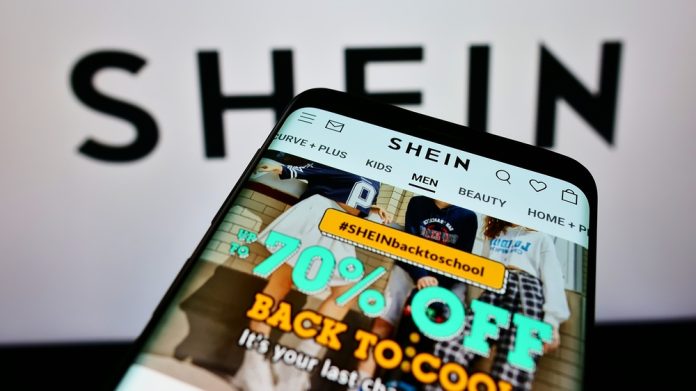How did Shein become the world’s biggest fashion retailer?
With awful Trustpilot reviews, claims of labour law violations, and design theft allegations rife, how exactly did Shein become the biggest fashion retailer in the world?By
Gemma Goldfingle
-
April 8, 2022

https://www.retailgazette.co.uk/stats/?sid=2&bsa_pro_id=542&bsa_pro_url=1
Chinese fast fashion etailer Shein officially became the largest fashion retailer in the world this week as it secured a $100bn valuation in its latest fundraising round. This makes it bigger than Zara and H&M – the world’s top two clothing retailers until this week – combined.
It has been a dramatic rise to dominance for Shein – pronounced She-in – and one that has not come without its fair share of controversy.
Shein was created by Chinese entrepreneur Chris Yu, an SEO expert, in 2008. Yu had previous launched online wedding dress business with three of Shein’s top executives before ditching it to focus on womenswear with the brand, which was originally named ‘SheInside’.
It rebranded to Shein in 2015, as it thought it needed a simpler name that was easier to find online. It was around this time that the business really started to take off and Shein emerged as the fastest-growing fashion retailer in the world.
But how did it do it?
Social climbing
The retailer may be relatively unknown to those over 30, however, for Gen Z shoppers Shein is now the hottest ticket in town.Chinese broker Zheshang Securities estimates generated $20 billion in sales last year and with sales still growing rapidly – it was being downloaded twice as often as Amazon’s app last year, making it the world’s most popular shopping app – it is set to turn over more than Zara owner Inditex this year.
Social media has been core to Shein’s success. The brand has more than 26 million Facebook and 24 million on Instagram and ‘Shein Hauls’, where influencers unpack their Shein deliveries, try on clothes and share how they feel on camera, have become viral hits with billions of views on TikTok and YouTube.

The retailer also uses ‘campus ambassadors’, who recruit shoppers on university sites and offer rewards for positive customer reviews.
Faster fashion
The success of Shein lies in the fact that it has supercharged the fast fashion model.The retailer uses algorithms to establish the latest fashion trends, which its 2,000 strong design team use as the basis to create a raft of new products, with a jaw-dropping 6,000 SKUs produced every single day.
But rather than ordering thousands of each item, Shein produces lines in very small quantities with fewer than 100 items ordered.
It then uses real-time information to see how well each item performs, and rapidly orders more if a SKU proves popular, while discontinuing items that are not selling.
Stolen design claims
Algorithms may be used to determine trends but Shein has been plagued by plagiarism allegations with both big brands and independent designers claiming the retailer has ripped off their designs.Brands such as Levi Strauss, Dr Martens and Ralph Lauren have taken legal action against the retailer, and there are many more complaints from independent designers and artists.
Elora Pautrat, an Edinburgh-based illustrator and digital artist told The Guardian last month that Shein had lifted her work on more than 10 occasions, and placed them on items including mouse mats, stickers and prints.
Shein’s constant array of new trends are sold at rock-bottom prices, with its average selling price at just over £5.
The retailer uses an army – somewhere in the region of 4,000 – mostly small suppliers in the manufacturing hub of Guangzhou in China.

All of these suppliers are integrated into the Shein’s software, which allows orders to be distributed among them automatically, according to Public Eye magazine. This enables Shein to respond to trends unusually quickly, and products to be made and distributed in just a week.
However, Public Eye conducted research into Shein’s supply chain, including visiting factories and interviewing workers, and found that some were working 75 hour weeks and that some facilities had clear health and safety breaches such as inadequate fire exits.
Tax breaks help international sales soar
Shein is an international success story.The online retailer now sells in more than 150 countries with the US its largest market – accounting for between 35 and 40% of sales, according to The Economist – followed by Europe.
In the UK alone, it is estimated to sell 30,000 items a day – more than 10 million a year – and spends more on advertising here than any other fashion retailer.
Low prices undoubtedly play a big role in Shein’s success overseas. But tax loopholes have been exploited to enable it to keep prices down.
Despite producing goods in China, Shein does not sell there, which makes it exempt from Chinese VAT and consumer taxes and means it pays lower corporation taxes.
Meanwhile, shipping directly to consumers, rather than to distribution centres like most big retailers do, means the retailer does not incur any import duties in the US or UK as its parcels are of such low values.
However, investment bank Morgan Stanley has warned that Shein’s current price advantage ‘might not be sustainable should tax policies change’ in China, Europe or the US.
READ MORE:
